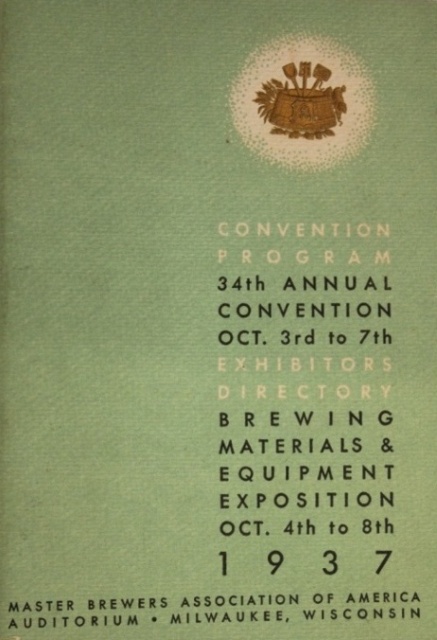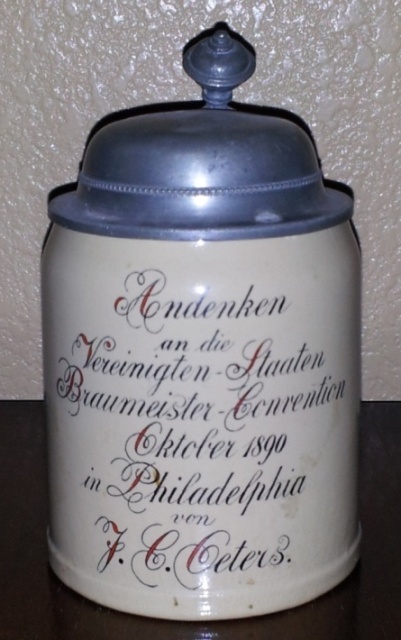Every family seems to have a “special someone”... that one individual who ends up with the box or the suitcase that is crammed with all of the family's treasures. Those family treasures include the things that no one had the heart to throw away and commonly include old photographs, letters, diaries, newspaper clippings, ledgers, military records and ribbons, birth/death certificates, etc. My wife, being a passionate and life-long genealogist, has spent countless hours researching, organizing, and preserving items of importance to her family. She is her family's designated “special someone.”
The longer I serve in the role of MBAA’s Heritage Chair, the more I learn that many of our local districts have their own “special someone,” the keeper-of-the-district's-treasures. Often, those treasures are handled much the same way as family treasures are handled. They are crammed into cardboard boxes, suitcases, trunks, or totes. They are stashed away in the basement, the attic, or the garage. These spaces can be veritable catacombs of catastrophe subjecting the treasures to dampness, mold, mildew, and wild gyrations of temperature extremes virtually ensuring their decomposition and breakdown. Even worse, they can be quickly and totally destroyed by fire, flood, or other natural disasters.
 It is in this spirit that I want to begin occasional Communicator pieces offering some basic, achievable archival advice. The basis for my advice is digitizing: that is, creating digital copies of selected district items. Digital technology has ushered in a variety of digitizing options that are quite doable and affordable. Possibilities include portable scanners, digital cameras, tablets, and even smartphones. All these devices are capable of creating surprisingly clear and accurate images of photos, journal articles, and other district documents, including larger or odd-shaped heirloom pieces such as mugs, plaques, trays, etc.
It is in this spirit that I want to begin occasional Communicator pieces offering some basic, achievable archival advice. The basis for my advice is digitizing: that is, creating digital copies of selected district items. Digital technology has ushered in a variety of digitizing options that are quite doable and affordable. Possibilities include portable scanners, digital cameras, tablets, and even smartphones. All these devices are capable of creating surprisingly clear and accurate images of photos, journal articles, and other district documents, including larger or odd-shaped heirloom pieces such as mugs, plaques, trays, etc.
Digitizing causes no harm to the original. The images created can (and should!) be stored in multiple locations. They can easily be shared and enjoyed via email. And the images can be improved and embellished if so desired!
 I have included two examples. The first digital image depicts a program cover from the 34th MBAA Convention that was held in 1937 in Milwaukee, Wisconsin. I found the program in our archives while I was researching at Iowa State University. I created the image myself using my Canon EOS Rebel T2i camera. I did not use a tripod or camera stand. I simply used the close-up feature of the camera with an 18-55mm lens. I disabled the camera's flash, hand-held it as steady as I could, and shot away within the existing lighting of the archival room. You can see that even with such unsophisticated technique, the details of the program are clear, even the traits of the textured paper on which the program cover is printed.
I have included two examples. The first digital image depicts a program cover from the 34th MBAA Convention that was held in 1937 in Milwaukee, Wisconsin. I found the program in our archives while I was researching at Iowa State University. I created the image myself using my Canon EOS Rebel T2i camera. I did not use a tripod or camera stand. I simply used the close-up feature of the camera with an 18-55mm lens. I disabled the camera's flash, hand-held it as steady as I could, and shot away within the existing lighting of the archival room. You can see that even with such unsophisticated technique, the details of the program are clear, even the traits of the textured paper on which the program cover is printed.
The second digital image represents an "odd-shaped" item: a stein from our 4th MBAA Convention, held in Philadelphia in 1890. I wrote about this stein back in October 2014. This image was generously shared with us by its collector. You can see that the details of the stein are clear, and the inscription is clearly legible, reading:
“Memories of the United States Brewmasters Convention, October, 1890, in Philadelphia for... (I think) F. C. Geters (the name of an individual attendee).”
In these two simple examples, you can see how both a piece of printed matter, as well as a physical, odd-shaped item can be captured and archived, then shared and enjoyed. The images are safe, preserved in perpetuity, and always available for viewing. I believe that digitizing can be a viable and affordable tool for preserving a district's treasures, easily achieved by a district's “special someone.”
